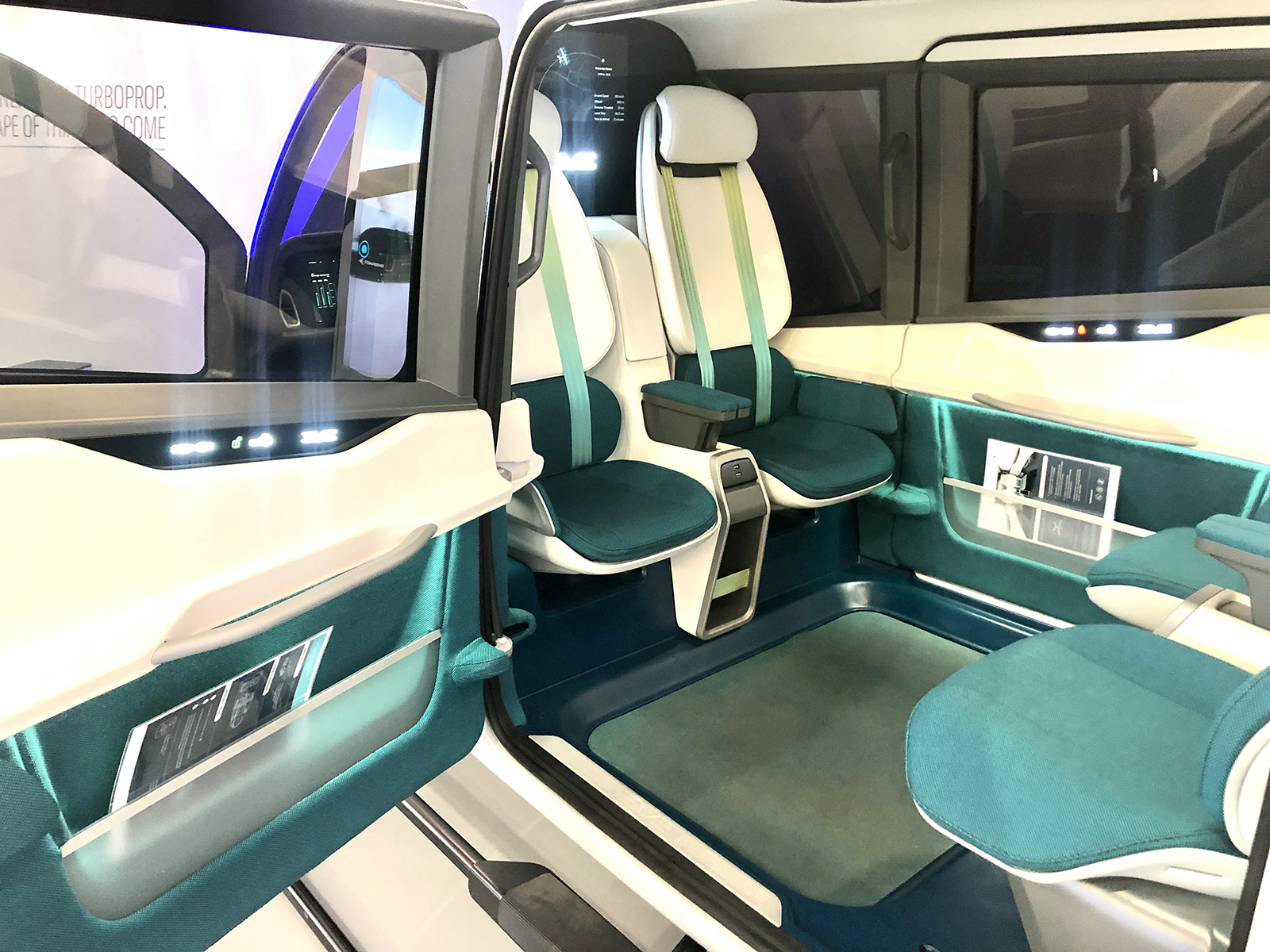Stay Up to Date
Submit your email address to receive the latest industry and Aerospace America news.
Eve Air Mobility shows off model of cabin interior for first time
FARNBOROUGH AIRSHOW, Farnborough, U.K. — Peering inside the white plastic model of the passenger cabin of Eve’s planned electric rotorcraft, the most striking features are the wall dividing the passenger area from the pilot’s cockpit and the fact that the four passengers would face each other, two looking forward and two backward.
Those design elements are meant to address customer safety and comfort preferences that Eve identified in extensive surveys, Flavia Ciaccia told me. She is vice president of user experience and market intelligence at Eve, a spinoff of Brazil-based Embraer located in Melbourne, Florida.
“Our main focus is urban mobility, to democratize travel. We embraced this design concept to make people feel they can fly safely, with no chance of another passenger interfering with the pilot,” Flavia said as we faced each other in two of the passenger seats.
Around me, blue-green seatbelts were strapped over white seats, upholstered in plant-based leather and contoured to stabilize passengers during flight. Center consoles included USB charging ports, armrests and storage areas. The seats are movable and stowable to accommodate larger luggage.
“This is more accessible because there’s a larger space in the middle to make it easier for people to board,” Ciaccia said. “There may be some cultures or societies that would prefer not to look at each other,” so Eve is considering also building some air taxis with “four forward-facing seats, like a van.”
Farnborough marked the public unveiling of the cabin design as Eve prepares to begin its first test flights. The company plans to seek certification by Brazil’s National Civil Aviation Agency.
A glass ceiling over passengers could serve as a sunroof or a video screen, Ciaccia said. Side windows are large enough to provide a good view during flight, but not so big as to cause vertigo if passengers look down, she said.
Eve has letters of intent for over 2,000 of its electric vertical takeoff and landing air taxis, which are not flying yet, from such Embraer customers as Utah-based SkyWest Airlines and Indiana-based Republic Airways. While Embraer started Eve, the subsidiary became independent and publicly traded in May.
A day before the air show here opened, Eve announced a design change in which it dropped canards from the rear of the plane, replacing them with an empennage.
Eight rotors will provide vertical lift, and a pair of pusher propellers will move the aircraft forward on flights of up to 95 kilometers, according to Eve. The company plans for short, urban trips of around 30 minutes.
“Our design for flight is still lift plus cruise with no moving parts,” Ciaccia said, meaning the rotors themselves don’t move to transition from vertical to forward movement. “The design is meant to be as simple as possible.”
Delft University of Technology in the Netherlands is testing the design for turbulence stability using software models, simulators and volunteers, Ciaccia said.
“We are pretty confident in our software, since it is the fifth generation of fly-by-wire systems used by Embraer,” she said.
Eve plans to achieve type certification by 2025 and entry into service by 2026, she said.

Read about Supernal’s cabin design here.
About paul brinkmann
Paul covers advanced air mobility, space launches and more for our website and the quarterly magazine. Paul joined us in 2022 and is based near Kennedy Space Center in Florida. He previously covered aerospace for United Press International and the Orlando Sentinel.
Related Posts
Stay Up to Date
Submit your email address to receive the latest industry and Aerospace America news.






